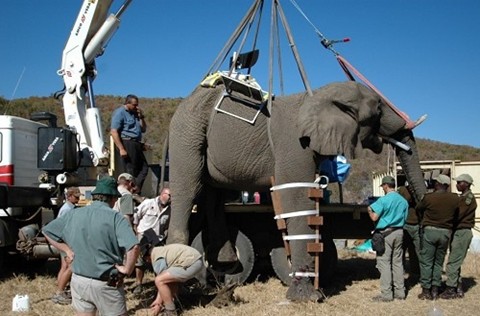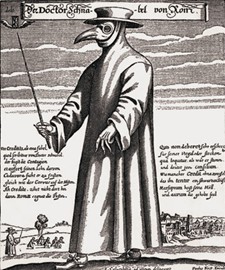The rest of our day is all about the Now the Hell Will Start screenplay, so we’ll outro with yet another clip of kabaddi mastery. Today’s legend is the late, great Harjit Brar Bajakhana, perhaps the best Indian raider to every play the game. Keep in mind that he performed at such a high level while having to hold his breath—one of the sport’s most important rules. Here’s to hoping kabaddi makes it into the Olympics one of these days—we much prefer it to, say, racewalking.
Another Kabaddi Legend
August 20th, 2009
→ 5 CommentsTags:Harjit Brar Bajakhana·India·kabaddi·Olympics·racewalking·sports
“What More Do I Need?”
August 20th, 2009

The first big magazine feature we ever wrote was about near-death experiences (NDEs). We have vivid memories of taking a prop plane from Washington D.C. to Charlottesville, Virginia, in order to interview a pair of psychologists who specialize in studying the effects of NDEs. What struck us most about their research was how the whole “walking down the long tunnel of light” experience changed folks’ priorities once they healed up. True, there was a tiny subset of NDE survivors who fell into deep depressions, having concluded that death is too terrifying to contemplate. But the vast majority became more caring, more giving people—they truly developed a newfound appreciation for the gift of life.
Our fascination with the way NDEs influence behavior continues to this day. And so when we learned of Jaswant Basuta‘s seldom-told story yesterday, we instantly knew we’d have to post about it. Basuta is commonly referred to as the 271st victim of the Pan Am Flight 103 bombing; he was ticketed for the flight, but missed boarding by a matter of minutes (though his luggage made it on the doomed plane). What’s particularly memorable about Basuta’s brush with death is that his life was essentially saved by his own minor sinfulness:
Some relatives from nearby Southall had come to see him off at the terminal and they decided to take Jaswant for a drink in the bar upstairs.
Jaswant was by no means a heavy drinker but on the odd occasion when there was cause for celebration, he was partial to a Carlsberg Special Brew.
And what with all his relatives here, today certainly was a special occasion. No doubt about it. One drink led to another. And another. And slowly Jaswant wasn’t in such a rush anymore.
“When his glass is empty, make sure you pour him another,” his brother-in-law said to the barman. The barman duly obliged.
Finally, he insisted he really must be going and it was only as he tore himself away that he realised the time was rapidly approaching flight time: six o’clock.
“Pan Am 103, New York, Gate Closing,” was flashing on the departure screen.
Please go read the whole thing. Basuta is a private man, so apparently didn’t share many details of how the experience changed him—save for the fact that it made him a more religious, more humble person. But we’re dying to know more—particularly the specifics of how he’s acted upon his stated impulse to dedicate his life to others. What has been the impact on his relationship with his wife, who believed for several hours that Basuta was among the Lockerbie victims? And how does he process the fact that his own intemperance is what ultimately saved him from death?
In the future, perhaps medical science will develop a treatment that simulates the effects of NDEs, and thus transforms thousands or millions of people into humble do-gooders overnight. Though, granted, it could be hard to find human guinea pigs willing the chance the bright, white tunnel.
→ 10 CommentsTags:aviation·Jaswant Basuta·medical science·NDEs·Pan Am Flight 103·religion·terrorism
Carbonated Vicodin in a Can
August 20th, 2009
We generally shy away from Red Bull, due to a bad experience we had after consuming four cans of the stuff one night. (Suffice to say our earthly vessel did not appreciate the deluge of taurine.) But perhaps we should reconsider our aversion in light of this Winona State study. Because Red Bull may have some medicinal properties about which we were not aware:
Red Bull((R)) consumption was associated with a significant increase in pain tolerance in all participants. These findings suggest that Red Bull((R)) consumption ameliorates changes in blood pressure during stressful experiences and increases the participants’ pain tolerance.
Guess that explains the ongoing love affair between NFL players and their Red Bull. Though consider yourselves forewarned—pain exists for a reason, which is to alert you to when grave injury is about to occur. You certainly don’t want to get in a Napoleon McCallum situation.
Comments Off on Carbonated Vicodin in a CanTags:football·medical science·Napoleon McCallum·NFL·Red Bull·sports
The Murder Project: Crocodile Tears
August 19th, 2009
We have to duck out for a few hours, to work on a big Wired piece that’s simmering on our front burner. Back as soon as possible; in the interim, please enjoy the above “gotcha!” clip of Dalia Dippolito, who was recently busted for trying to get her husband offed. Like so many murder-for-hire amateurs, Dippolito unwittingly found herself steered toward an undercover cop posing as a hitman. If only she’d read out latest Murder Project post, she might have realized that the $3,000 figure she was quoted was far too low. And that realization might have saved her the above embarrassment—being caught on camera faking tears over her husband’s fictional murder. Though, truth be told, we do find her act quite convincing.
(h/t John Dickerson)
→ 4 CommentsTags:crime·Dalia Dippolito·Florida·police·The Murder Project
“The Requirements to Compete as a Woman”
August 19th, 2009
In reading this quickie AP bit about a female runner whose gender is in question, we were left wondering about the shades of sexual grey that the International Association of Athletic Federations must contend with in the age of hormones. A quick peek in the pants, alas, is no longer sufficient to determine whether a male is masquerading as a female—in fact, that’s not even really the issue anymore. Rather, it’s more about athletes who are born in the gender interzone, and elect to use either surgery or drugs to shade more toward one side than the other. How does the IAAF grapple with such quandaries? Here’s what they’ve got to go on (PDF). Given these permissive guidelines, we have to like Caster Semenya‘s odds of continuing to compete as a woman.
Plenty more here on the history of the Olympics gender issues. It all began, of course, with the late, great Stanisława Walasiewicz.
→ 4 CommentsTags:Caster Semenya·gender·Olympics·sports·Stanisława Walasiewicz
Citrus is Your Friend
August 19th, 2009

Yesterday we touched upon medicine’s tendency to stick with certain treatments even when there’s a lack of credible evidence attesting to their efficacy. But there’s a flip side to that foible—some physicians’ genius for concocting cures on the fly, with no lab or patient data to assist them.
Such was certainly the case with scurvy, the bane of generations of sailors. The punchline to a million a pirate jokes is also history’s most lethal “occupational disease”: between 1500 and 1700, scurvy killed roughly two million maritime professionals. Yet it might have killed many, many more had countless shipboard physicians not been aware of vitamin C’s curative properties—something doctors were actually aware of centuries before James Lind famously extolled the virtues of oranges. The citrus cure’s 15th-century roots are expertly traced in the highly recommended The History of Scurvy and Vitamin C.
The book reaches back and finds a mention of the oranges-scurvy connection in the 1498 log of Vasco de Gama. But our favorite part is this snippet from the journal of a Carmelite missionary who helped explore California in 1602:
Health came not by doctors or surgeons, medicines or other drugs from the pharmacies, or by any human remedy understood to be a medicine usually given in this disease. If there was any human relief it was, in one case, the fresh and substantial food which was given them by the good efforts of the General and the alcada major of that province, and in the other a miraculous one, which brought health in a visible manner, namely, the eating of a little fruit found in those islands in great abundance at this season, and which the natives call jocoistles…
The way that the virtue of this little fruit came to be known was this. When some soldiers went to the island with Father Comisario, to say mass and bury somedead, a corporal anxious to try things of the country, plucked one and cutting it in half with a knife and separating the skin from teh pulp, put it into his mouth with difficulty, as best he could. He tried to chew it to see what flavor it had, and found it had good taste. He soon commenced to throw out of his mouth much fetid blood.
Nineteen days later, the fruit sampler and his shipmates were completely over their bouts with scurvy. Too bad they didn’t publicize their discovery a bit better, or hundreds of thousands of lives could have been saved.
Comments Off on Citrus is Your FriendTags:California·disease·food·James Lind·medicine·public health·scurvy·Vasco de Gama
First Contact: The Apache
August 18th, 2009
 Mea culpa for letting our First Contact series lapse. It’s been nearly two months since we discussed Martin Frobisher’s encounter with the Inuit, and that’s far too long to do without primary-source accounts of the clashes of civilizations. But we’re back with a dandy today, courtesy of the Spanish explorer Francisco Vázquez de Coronado.
Mea culpa for letting our First Contact series lapse. It’s been nearly two months since we discussed Martin Frobisher’s encounter with the Inuit, and that’s far too long to do without primary-source accounts of the clashes of civilizations. But we’re back with a dandy today, courtesy of the Spanish explorer Francisco Vázquez de Coronado.
Though he never did manage to find those fabled Seven Cities of Gold in the American West, Coronado did manage to stumble upon an Apache tribe in 1541—the first time a European ran across the people who would come to play such a key role in 19th-century American history. Coronado dubbed these people the Querechos, and in a report back to King Charles I of Spain, he marveled at their livestock management skills:
After nine days’ march I reached some plains, so vast that I did not find their limit anywhere that I went, although I traveled over them for more than 300 leagues. And I found such a quantity of cows in these, of the kind that I wrote Your Majesty about, which they have in this country, that it si impossible to number them, for while I was journeying through these plains, until I returned to where I first found them, there was not a day that I lost sight of them. And after seventeen days’ march I came to a settlement of Indians who are called Querechos, who travel around with these cows, who do not plant, and who eat the raw flesh and drink the blood of the cows they kill, and they tan the skins of the cows, with which all the people of this country dress themselves here. They have little field tents made of the hides of the cows, tanned and greased, very well made, in which they live while they travel around near the cows, moving with these. They have dogs which they load, which carry their tents and poles and belongings. These people have the best figures of any that I have seen in the Indies.
Many more vintage Apache photos here. And Geronimo’s autobiography is highly recommended, too.
(Image via Old Pictures)
→ 5 CommentsTags:Apaches·First Contact·Native Americans·ranching·Spain·U.S. history
Scared Sober?
August 18th, 2009
 We don’t have too many hobby horses here at Microkhan, but one of them is a steadfast belief that many long-accepted practices are far less effective than advertised. This is typically because our species is easily seduced by logical facades, and thus pays too little attention to actual evidence. You can understand, then, why the medical establishment spent centuries swearing by bloodletting—it makes intuitive sense that “bad blood” would equate with ill health. It wasn’t until we sat down and really analyzed patient outcomes that we realized the practice was doing more harm than good.
We don’t have too many hobby horses here at Microkhan, but one of them is a steadfast belief that many long-accepted practices are far less effective than advertised. This is typically because our species is easily seduced by logical facades, and thus pays too little attention to actual evidence. You can understand, then, why the medical establishment spent centuries swearing by bloodletting—it makes intuitive sense that “bad blood” would equate with ill health. It wasn’t until we sat down and really analyzed patient outcomes that we realized the practice was doing more harm than good.
A less extreme example from modern times is alcohol warning labels. Whenever we get midway through our third beer of the evening, we often wonder whether these ubiquitous labels have ever been proven to deter a single imbiber. There’s a famous early-to-mid ’90s study that found such labels “do not appear to increase or decrease alcohol use.” But that study relied on self-reporting from teenagers, which doesn’t exactly make for the best data. What’s needed is a way to construct a controlled experiment, in which drinkers whose bottles feature the labels are compared to drinkers who aren’t warned via small-type text. Yet that hasn’t been possible here in the U.S., since the warning labels broke nationally instead of on a state-by-state basis.
Fortunately for us, the Australians have the chance to settle this whole warning-label business once and for all. The country is considering labels in the wake of reports that 47 percent of its murders are tied to drink. And this presents a great opportunity to build the kind of experiment we here at Microkhan would love to see:
Unlike many public health interventions, alcohol warning labels are a good candidate for a policy trial. It’s hard to randomise exposure to quarantine laws or food safety standards, but relatively easy to control exposure to alcohol health warnings.
For example, we could take two cities of comparable size, say Sydney and Melbourne or Brisbane and Perth, introduce alcohol warning labels in one of them and not the other. After a decent interval – 12 months at a minimum – we could measure whether there has been a change in the level or nature of alcohol-related harms in each city. This would involve selecting a few measurable indicators, for example, alcohol-related admissions to hospital emergency departments and motor vehicle accidents involving alcohol, and measuring them both before and after the health warnings are introduced. The impact on specific at-risk groups, such as young people, should also be measured to determine whether they respond differently to health warnings, compared with the general population.
We have little doubt that such a study would conclude that warning labels have close to zero impact. But it would nice to have the labels’ futility proven by science, rather than remain just a cynical hunch.
(Image via Marine Safety Equipment Services and Sales Ltd.)
→ 1 CommentTags:alcohol·Australia·bloodletting·crime·medical science·public health
A Raider for the Ages
August 17th, 2009
When the conversation turns to the all-time greats of kabaddi, the name Ameen Jatt must invariably be mentioned. The thick-bodied Pakistani raider was a dominant force in the 1990s, and still much-admired among the sport’s rabid fanbase:
An awesome player, simply put out of this world! In 1995 World Cup he led Pakistan into the final against very tough opponents from USA, and England (that included legendary stopper Major Gakhal mama of current superstar Tirith, and another legendary stopper called Swarna who himself had a bad habit of tossing around players fying through the air by simply hold grasp of their wrists and then laucnh take off!!!)
In an subsequent final vs the now known Dream Team of Harjit, Phidoo, Suba, and Jasbir Mangee, Peema, Malikiat Angrez, Kala etc., Amen played again incredibly but as the rest of the Pakistan after hard fought matches leading up to the final were running out of steam, and the tough big players from India including the legends Harjit Brar, and Phidoo, Suba and Mangee started to assert their physical supremacy on the worn out Pakistani raiders and stoppers. Amen was stopped by Kala the stopper from India, and also Neki as well.
But as a player this was the real deal, he was about 215 pounds, and man he could run and was he ever strong! He could easily pick up bigger and heavier players while running over the line for an easy point. In those times the players were much bigger than now on average, and he looked small by those standards yet he still out shone most players. He was extremely fast to evade the legal flying kenchi’s that are banned nowadays.
For the record, we have no idea what a “flying kenchi” is. But if it’s banned in a sport as rough as kabaddi, you know it’s because myriad bones were shattered in years past.
The Lakers of Poultry Judging
August 17th, 2009
 We’re in the midst of working on a Wired piece about agricultural science, so you can expect Microkhan to dish up a plethora of farm-related factoids in the coming weeks. We’ll start today by highlighting a world us big city types know embarrassingly little about: the collegiate poultry judging circuit.
We’re in the midst of working on a Wired piece about agricultural science, so you can expect Microkhan to dish up a plethora of farm-related factoids in the coming weeks. We’ll start today by highlighting a world us big city types know embarrassingly little about: the collegiate poultry judging circuit.
Our journey began as we scanned this paper from the University of Nebraska’s poultry management program. That spurred us to comb through recent news items on ThePoultrySite.com, where we learned of a fantastic honor recently bestowed upon a dedicated Texan:
The American Poultry Historical Society has honored Dr W.F. Krueger, professor emeritus at Texas A&M University, with the Poultry Pioneer and Legend Award.
The award honours individuals who have made significant lifetime contributions to the poultry industry.
Prior to his retirement, Dr Krueger served on the faculty in the department of poultry science, which is part of the College of Agriculture and Life Sciences. He retired in 2006 after 53 years of service.
In addition to his work with genetics and poultry management systems, Dr Krueger coached the Texas A&M Poultry Judging team, which won multiple national championships.
Even in Krueger’s absence, it seems, the Aggie squad continues to roll. The picture above is of the school’s 2008 team, which snagged top honors at last year’s championships.
Unlike livestock contests involving milk-and-meat-yielding mammals, poultry tournaments focus on egg production and quality rather than an individual animal’s physical splendor. We can chuckle if we’d like, but don’t forget—the reason eggs have become our nation’s cheapest protein source is in part due to the competitive spirit of the men and women who take part in such “games.”
Check out the rules for the forthcoming 2009 championships here. We reckon that the Aggies must be the favorites, though we’d be curious to know the Vegas odds.
A Death Less Ordinary
August 14th, 2009
It’s probably a bit of stretch to file 1999’s Deep Blue Sea under our ever-popular Bad Movie Friday heading. While the premise of the film could scarcely be more ridiculous—hyper-intelligent mako sharks?—the sunken-laboratory thriller is not without its guilty pleasures. Chief among them is this classic scene, which features Samuel L. Jackson at his edgy finest. We’re not too proud to admit that his character’s grisly demise influenced a scene in the Now the Hell Will Start screenplay; we just substituted a tiger for a shark, and drew out the chomping for a good thirty seconds longer.
→ 3 CommentsTags:animal attacks·Bad Movie Friday·Deep Blue Sea·movies·Now the Hell Will Start·Samuel L. Jackson·sharks
Mortality as Morality
August 14th, 2009
We’ve yet to fully sort out our feelings about zoos. On the one hand, we obviously love us some exotic animals, especially those who occasionally turn on Man. (Yes, we’re macabre like that.) But the concept of captivity makes us more than a wee bit uncomfortable; we’ll never forget our last trip to the Bronx Zoo, when we glimpsed deep sadness in the eyes of a silverback gorilla—a gorilla whose young offspring, by contrast, had not yet become resigned to their fate.
But since there’s no scientific way to measure the happiness of zoo animals, those who wish to debate the topic must settle instead for looking at mortality figures. Anti-zooists, for example, have recently been pointing to this recent study on elephant survivorship:
We analyzed data from over 4500 elephants to show that animals in European zoos have about half the median life span of conspecifics in protected populations in range countries. This discrepancy is clearest in Asian elephants; unlike African elephants in zoos, this species’ infant mortality is very high (for example, twice that seen in Burmese timber camps), and its adult survivorship in zoos has not improved significantly in recent years…We suggest stress and/or obesity as likely causes of zoo elephants’ compromised survivorship.
But many zoo operators counter those claims, with Malaysia’s principal zoo estimating its animal mortality rate at a measly four percent. That’s a bit higher than the nation’s infant mortality rate, but still a fair bit better than what’s typical in America’s finest zoos—not to mention many wild habitats, where predation and disease take a sizeable toll.
Is it possible that the morality of zoos depends somewhat on the species in captivity? Could a zoo environment be deemed immoral for elephants, but moral for hippos based on their wildly differing survivorship rates? It’s a question worth asking, at least until we figure out a more reliable way to gauge what the animals think of living in manmade environments.
→ 4 CommentsTags:animals·Bronx·Bronx Zoo·elephants·hippos·Malaysia·philosophy·primates·wildlife management·zoos
Where the Smoke Jumpers Are
August 14th, 2009
In the midst of trying to learn everything there is to know about the Air Tractor 802 “Fire Boss” model, we stumbled across one of the coolest data aggregators we’ve seen in eons: Pitney Bowes’ Fire Locator, which provides (almost) real-time updates on the nation’s raging wildfires. When you take it for a spin, we highly recommend that you enable the Flickr option, so that you can check out recent pics of aerial dousing.
Ceausescu Through the Looking Glass
August 13th, 2009
Richmonda, Virginia’s DJ Carlito specializes in digging up vintage, totally random vacation films and setting them to music. We’re absolute suckers for all things Romanian, so the above clip is a fave. But also check out Carlito’s found footage from Tunisia in 1967—not to mention this Indonesian propaganda flick from the heyday of (we think) Sukarno.
Comments Off on Ceausescu Through the Looking GlassTags:1960s·DJ Carlito·Indonesia·movies·Romania·travel·Tunisia
Oil Non-Shock
August 13th, 2009

During out all-too-brief sojourn in St. Cloud, Minnesota, we caught wind of James Leroy Iverson’s release from North Dakota’s Missouri River Correctional Facility, after serving 40 years for a pair of 1969 murders. Iverson was, in fact, North Dakota’s longest-serving inmate, and thus a man unaccustomed to 21st-century living. What has shocked him the most about our strange world so far?:
“He made the comment that when he went into prison gas was 15 cents a gallon.”
Oh, how times change! But wait a second—what happened between 1969 and 1979? Because as the chart above shows (taken from raw data here), the inflation-adjusted price of gasoline has remained surprisingly static over the past three decades. Sure, there have been occasional spikes and dips related to market turmoil. But on April 26, 1979, the average price of a gallon of gasoline in today’s dollars was $2.42; right now, the national average is only 22 cents more than that.
When Iverson went away, by contrast, the inflation-adjusted price for a gallon of gas was just 80 cents. As this helpful graph makes clear, everything changed in 1973, with the first of the Me Decade’s two oil shocks. What’s amazing is how the effects of that crisis became permanent—namely, the creation of a new plateau for gasoline prices from which it looks like we’ll never climb down. Which leaves us with the question—were prices prior to that crisis artificially low, since traders didn’t possess an adequate fear of shortages? You never correctly value a commodity, after all, until you realize that it can be taken away so easily—which probably means we should take a look at prices for liquor both before and after Prohibition, too.
→ 4 CommentsTags:economics·energy·fossil fuels·James Leroy Iverson·North Dakota·prisons
St. Cloud Bound
August 11th, 2009
By the time these words go live, we’ll be en route to beautiful St. Cloud, Minnesota for a whirlwind work trip. Odds are we won’t have a chance to blog while on the road, so no fresh posts for the next couple dozen hours or so. Take a break, enjoy some vintage Nas, and we’ll hopefully catch you again on Thursday—depending on whether we’re able to make our tight connection at O’Hare on Wednesday evening. Wish us luck.
Comments Off on St. Cloud BoundTags:aviation·hip-hop·housekeeping·Minnesota·music·Nas
They’re Not Just Plot Devices Anymore
August 11th, 2009

Last night, we got in a brief discussion with a pal regarding the Hollywood history of bearer bonds. These arcane financial instruments played a key role in at least two cinematic classics from our younger years: Beverly Hills Cop, in which Eddie Murphy’s pal foolishly steals some “German bearer bonds” from a drug dealer, and Die Hard, where they were hidden deep within the Nakatomi Building. But save for a few instances of fakery, we’ve seldom heard of bearer bonds outside of filmdom.
It seems, however, that’s only because we haven’t been tracking recent developments in Latin American finance. Bearer bonds are moving like hotcakes down there, especially in countries like Panama where capitalism retains its Wild West flavor. And given the anonymous nature of the bonds, it’s hardly unexpected that they’ve become an underworld darling:
Federal prosecutors have initiated forfeiture proceedings against 14 Mexican bond certificates dating back to 1930 that they say are now wrapped up in a complex money laundering scheme.
The debt certificates—worth up to an estimated $22 million—were seized in two separate incidents in April at Hidalgo-Reynosa International Bridge and the Falfurrias checkpoint…
Bearer bonds are frequently issued by companies in Latin America as a way to raise money but have become an increasingly used tool in the money laundering game.
Unlike other securities transfers, which financial regulators monitor closely, the sale of bearer bonds are conducted anonymously and the certificates can be redeemed almost like an IOU—making them an attractive conduit for those looking to hide large sums of money earned through illicit means, said John Heasley, general counsel for the Texas Banker’s Association.
“They’re almost as good as cash,” he said.
Once again, Hans Gruber is proven to be a criminal ahead of his time.
Comments Off on They’re Not Just Plot Devices AnymoreTags:bearer bonds·Beverly Hills Cop·crime·Die Hard·drugs·Hans Gruber·Mexico·money·movies·Texas
Beastmaster Errata
August 10th, 2009
Look, we’re big enough Mongolian monarchs to admit when we’ve goofed. And that’s exactly what appears to be the case with last week’s Bad Movie Friday post about the 1982 Marc Singer vehicle The Beastmaster. We riffed about Singer’s apparent refusal to save the life of the ferret that had just helped pluck him from some nasty quicksand. But as several commenters pointed out, we posted an abridged version of the scene; as you can see above, starting at around the 2:01 mark, the title character does, indeed, return the favor to the plucky, elongated rodent.
We reckon this error reveals us to be something less than true Beastmaster fanatics. Because the ferret rescue scene is apparently so popular among a certain set of fanboys, it was paid touching homage in the Beastmaster TV series some 17 years later. Guess this means we won’t be receiving any all-expenses-paid invites to meet Marc Singer at F.A.C.T.S. 2009.
→ 1 CommentTags:animals·Bad Movie Friday·errata·ferrets·Marc Singer·movies·rodents·The Beastmaster·TV
All from the Comfort of Chihuahua
August 10th, 2009

Many moons ago at the Bronx Museum, we caught a great bit of satiric video art entitled Why Cybraceros?. We’ll let the artist himself, Alex Rivera, explain the riotous concept:
In his second film, Why Cybraceros? (USA 1997), Rivera sarcastically imagined a future in which migrant farm workers (or Braceros) could work in America, but never actually come to America, by controlling robotic workers over the internet from their country of origin. The Cybracero concept started as a surrealist satire of anti-immigrant politics, and internet utopianism in 1997. Strangely, it has become reality today in Indian call-centers in which thousands of people work in America over the net, but may never participate in any other way in U.S. society.
The five-minute clip, which can be viewed here, has now spawned an equally sharp-edged (if lamentably content-light) website that purports to be the corporate portal for Cybracero Systems Inc. We wonder how many folks have stumbled across the site and not gotten the joke—we reckon a lot, given that Rivera plays it awful straight. Well, except for The Onion-style testimonials—we sincerely hope anyone could see right through those.
→ 1 CommentTags:Alex Rivera·art·Bronx·Bronx Museum·comedy·Cybraceros·immigration·museums
Who Will Slip?
August 10th, 2009
We find ourselves in full agreement with The Economist‘s argument against America’s draconian sex-offender laws, which prescribe too-harsh punishments for youthful blunders and other crimes unlikely to be repeated. But we were struck by this passage from the polemic, which would seem to undercut the magazine’s case:
A meta-analysis of 29,000 sex offenders in Canada, Britain and America found that 24 percent had re-offended after 15 years.
Those aren’t the sorts of odds that will make an already jumpy public get behind any sort of legal reform. What’s needed, then, is a way to better identify which offenders are most likely to become recidivists, and focus limited monitoring resources on them. But is that possible, or just a psychological pipe dream? There’s certainly no dearth of researchers who believe we’ve got the tools to identify the most rotten apples among the sex-offender lot. But do we want to spend the money?:
There is a system for classifying adult criminal behavior using the MMPI-2 and the Megargee typology. This coupled with the Hare Psychopathy Checklist is used to predict recidivism. This system has a 95+% test-retest reliability in predicting recidivism. As for adolescent offenders, the system for classifying criminal behavior is the Hare Psychopathy Checklist Youth Version when coupled with the MMPI-A and the Megargee typology. It also has a 95+% test-retest reliability in predicting recidivism. These are very expensive to administer, analyze, and compile into an evaluation with recommendations. The total cost ranges from $3500 to $5000. The time-frame ranges from 2 to 6 months, depending on the availability of collateral information.
Granted, there are probably long-term savings to be had here, given that probationary controls on the majority of sex offenders could thus be relaxed. (And a lot of them would find it easier to re-enter the work force, too.) But given the American panic over sex offenders, it’s virtually impossible to imagine a politician getting within ten-foot-pole’s distance of this cause.
Comments Off on Who Will Slip?Tags:crime·law·psychology·sex offenders·The Economist
The Sacrificial Ferret
August 7th, 2009
Whatever you may be drinking this weekend, please plan on pouring a little out for the heroic ferret in this classic The Beastmaster clip. We have no idea why Marc Singer’s character, supposedly a Dr. Doolittle-like friend to the animals, doesn’t try and help his rodent savior. But that’s just one of the many eternal mysteries we regularly leave unsolved here on Bad Movie Friday.
→ 9 CommentsTags:Bad Movie Friday·ferrets·Marc Singer·movies·rodents·The Beastmaster
A Bad Time to Get Bitten
August 7th, 2009

We’ve long assumed that antivenins were stocked in every hospital pharmacy, so that snakebite victims need only worry about getting medical attention in time. But, alas, that’s really not the case at all—even mainstream antivenins such as CroFab must often be shipped in to address specific cases, and rarer remedies are getting increasingly hard to find. The largest antivenin bank in the United States, which is under the aegis of the Miami-Dade County’s fire department, is suffering from budget shortfalls that threaten its very existence. And up in Canada, the renowned Ontario Antivenin Bank is similarly strapped for resources. After all, when governments are in fiscal crisis, the first items to get chopped are the ones that sound most exotic.
The antivenin shortage is particularly bad news for anyone who gets bitten by a non-native snake, such as those from Down Under. We very much doubt your local hospital will be able to order up enough CSL Death Adder to save your life.
Comments Off on A Bad Time to Get BittenTags:animal attacks·antivenin·Canada·Florida·medicine·Ontario·snakes
Zezo’s World
August 7th, 2009
Once in a while, we receive a comment that merits bumping to the front page. Such is the case with an anecdote just appended to this April post, in which we wondered about the fate of Charles Manson’s children—particularly Zezozose Zadfrack Glutz, the product of his carnal union with Susan Atkins. A reader chimed in with an update that struck us as worth highlighting:
I met Zezozose about 11 years ago in Richmond, Virginia. We hung out a bunch of times and I had hours of conversations with him.
He was, at that time, going by the name ‘Zezo.’ The really sad thing is that he got the letters ‘LSD’ tattooed in very large letters on his forehead at the age of 15. Life has not been good to Zezo. He couldn’t get a decent job with a tattoo like that on his face and I doubt he will ever have the money to get it removed. He was working part-time at the dump. I don’t think he tended to stay in one place for very long, He talked about drifting around the country from place to place.
Zezo is a genuinely intelligent, likable guy who has been through some terrible things and it showed. I didn’t get the impression that he had a lot of education. He mentioned having visited ‘Charlie’ in prison at times, but I don’t think he’d ever been in touch with his mother. He had been in touch with other people from the original, extended Manson group. I got the impression that things did not go well with his adopted family.
Last I heard, which was a few years ago, he had a wife and at least one kid and was really struggling to make ends meet.
Though we can’t vouch for the accuracy of this update, something about it struck us as genuine. And ever since, we’ve been turning the same question over in our minds: how can we find Zezo? Because writing his story would basically be our non-fiction Holy Grail.
Regardless of whether or not we ever find the man, we sure hope that life’s taken a better turn for Zezo over the past several years. And we hope he scraped together enough cash to get that tattoo lasered off.
→ 8 CommentsTags:Charles Manson·crime·cults·Susan Atkins·Zezozose Zadfrack
“Scotch Taped with a Razor Blade…”
August 6th, 2009
There are two salient factoids that we’d like to pass along about the song above:
1) This was the first hip-hop 12-inch we ever purchased, from the Music+ retail store on Ventura Boulevard. (Don’t look for it—much like the Electric Banana, it’s not there anymore.) We were so enamored of the tune that we recorded every single episode of Yo! MTV Raps for a month straight, just so we wouldn’t miss the video.
2) Fifteen percent of the MCs featured on “Self Destruction” are now hardcore Scientologists. Perhaps they’ll one day collaborate with Beck on an anti-Xenu anthem.
Comments Off on “Scotch Taped with a Razor Blade…”Tags:hip-hop·music
Snipped by Disney
August 6th, 2009

The entertainment conglomerate behind Dumbo also recognizes that elephants aren’t always sweethearts—especially when too many pachyderms are competing for too few resources. And so Disney’s top veterinarian has spent the past few years traveling the globe, making sure that elephant populations stay within reason. His method? Straight-up surgical:
Wildlife officials in several countries are considering killing elephants to control the burgeoning population, according to Disney officials, but surgical vasectomies can help save habitat without harming the animals.
According to Disney, elephants are unique among most mammals since their testes are internal and require abdominal surgery to perform a vasectomy, making the relatively simple procedure much more complex to conduct on elephants in the wild. The team used laparoscopic medical equipment specifically developed for this project and scaled from human to elephant proportions.
More here. Despite our yen to visit Swaziland, this is a job we don’t envy in the least.
Comments Off on Snipped by DisneyTags:Disney·elephants·medicine·Swaziland·wildlife management
The Fog of Plague
August 6th, 2009
 With the Chinese town of Ziketan locked down on account of pneumonic plague, it’s worth looking back at a similar incident from 15 years ago: the Surat plague of 1994. The Indian city ended up recording approximately 5,150 cases of pneumonic plague, which resulted in a shade under 60 fatalities—by no means a major epidemic, despite an initial shortage of antiobiotics. But in the early days of the outbreak, the widespres fear was the most difficult thing to control (PDF):
With the Chinese town of Ziketan locked down on account of pneumonic plague, it’s worth looking back at a similar incident from 15 years ago: the Surat plague of 1994. The Indian city ended up recording approximately 5,150 cases of pneumonic plague, which resulted in a shade under 60 fatalities—by no means a major epidemic, despite an initial shortage of antiobiotics. But in the early days of the outbreak, the widespres fear was the most difficult thing to control (PDF):
When news of the plague became known to the public, one-forth of Surat’s population (0.7 million) fled the city. The people who fled took all types of transport and paid whatever necessary. Transport operators made an enormous profit. The panic stricken people took taxis, tempos (three wheelers), trains and buses to flee the city. The panic was wide spread; every person with swollen lymphnodes was thought to have plague. The mass exodus occurred over long distances by railways and short distances by buses and other carriers. Surat does not have an airport for commercial flights. The train and bus stations were full of people struggling to make space for themselves and their family members, sitting, standing, hanging out the doors and windows and even on the roofs. The city of Surat consists of a large number of migrant workers who come not only from the state of Gujarat, but also from north-western and eastern India. Most of these migrants work in the silk and cotton textile mills, and diamond cutting and jewelry industries. Such migrants also come from the adjacent states of Maharashtra and Madhya Pradesh. These migrants tried to leave the city in order to get back to their home towns and villages, thinking that there they would find safe havens. While doing so, some infected migrants in the incubation stage, carried the disease with them.
The residents of Gurat fled in part because the mere mention of the word “plague” carries such sinister connotations—never mind that the pneumonic version of the disease is eminently treatable, at least compared to its bubonic cousin. It’s also bears mentioning that the epidemic wasn’t even confirmed as plague until several years after the fact, when DNA analysis (PDF) finally detected the fingerprint of Y. pestis. But in the midst of a Black Death panic, no one wants to wait around for the eggheads to confirm their worst fears.
A nice little FAQ on pneumonic plague here. And a little history lesson on Renaissance Italy’s surprisingly smart anti-plague strategies here.
→ 1 CommentTags:bubonic plague·China·India·Italy·pneumonic plague·public health·Renaissance history·Surat plague
Tilting at (Underwater) Windmills
August 5th, 2009

Apologies for the dearth of posting today. We’re hip deep in a pair of major projects right now, and we spent way too much time sorting through murder-for-hire data this morning. Now we’re off to cold call a bunch of Mexican scientists, who will doubtless chortle at our ugly Spanish. Wish us luck, and please enjoy this small token of our gratitude for your forbearance: a great account of two of the nuttiest (yet subtly ingenious) 19th-century submarines every built. More technical info available via this dead tree (tepidly reviewed here by The Independent).
The Murder Project: By the Numbers
August 5th, 2009
 Bloggers are lazy? Microkhan chortles at that stereotype. We just wrapped up a long morning of analyzing FBI data, all in the name of furthering The Murder Project, our ongoing effort to assess the state of today’s contract-killing marketplace. And today’s verdict does not exactly lift our hearts.
Bloggers are lazy? Microkhan chortles at that stereotype. We just wrapped up a long morning of analyzing FBI data, all in the name of furthering The Murder Project, our ongoing effort to assess the state of today’s contract-killing marketplace. And today’s verdict does not exactly lift our hearts.
As mentioned previously, the only reliable pricing study we’ve come across (via Slate‘s Nina Shen Rastogi) is this one from Australia. It examined 163 contract killings in that nation, and found that the average price was $12,700. That’s about on par with what murder-for-hire cost in New York City back in 1914, which got us wondering whether hitman prices have remained static over time.
Our DIY analysis involved looking at the last two years’ worth of FBI press releases, in search of pricing data in murder-for-hire cases. (Yes, we realize that a true scientist would’ve looked at the court records instead of the press releases. If anyone’s willing to fund such research, believe us, we’re game.) We automatically excluded all cases in which the the killer was, in fact, an undercover FBI agent; in such instances, agents are instructed not to quibble with whatever sum they’re offered, in order to avoid any appearance of entrapment. Alas, that ruled out over half of the murder-for-hire cases right off the bat.
Of those that remained, we tabulated the price quotes, then knocked out the two most extreme outliers: a $600 fee on the low end, and a $75,000 fee on the high end. We then calculated the average price for the cases that remained. That hallowed figure?
Exactly $6,000 per hit.
Before y’all start jumping up and down, lamenting that life has become astonishingly cheap in 21st-century America, a few caveats must be taken into account. For starters, consider that the vast majority—approximately 85 percent—of these cases involved family members targeting one another. These are not master criminals by any stretch of the imagination, and so they started the murder-for-hire process with a) limited funds and b) no idea of where to find a killer smart enough to evade capture. In fact, we were struck by how many folks simply asked co-workers to do the job—often drug-addled co-workers.
Also, there just didn’t seem to be many cases involving organized crime figures, who would presumably pay a premium to have jobs done right. When murder-for-hire was mentioned in regards to such figures, it was usually as part of a RICO case; the “hire” element of the killings thus involved in-kind payments made to lieutenants, rather than straight-up fees-for-service. We reckon this means the days of one-off freelancers are far behind us—surely to Hollywood’s chagrin.
More of this series soon. Next up: the market in Western Europe, and what the fees Over There might tell us about the efficacy of Continental policing.
→ 4 CommentsTags:crime·FBI·Nina Shen Rastogi·statistics·The Murder Project
Farewell, Arena Football League
August 4th, 2009
We can’t say we ever watched more than 90 seconds of an Arena Football game, so news of the league’s imminent demise didn’t exactly make us cry hot, salty tears. But 22 years is a long time for an upstart pro-sports league to make it—the likes of the USFL could only dream of achieving such longevity. So the clip above shall serve at our tribute to the soon-to-be-defunt AFL and its unique brand of heavily regulated violence. Here’s to hoping some of the laid-off players can find gigs in the Japanese league.
Comments Off on Farewell, Arena Football LeagueTags:Arena Football League·football·Japan·sports
The Filipino Route Around
August 4th, 2009
Yesterday we looked at the economic benefits of the Philippines’ divorce ban. In doing so, we noted that while legal splits are certainly uncommon over there, they’re certainly not unheard of. Filipinos who want out of bummer marriages must opt for an annulment, which is ostensibly tough to obtain. But as is usually the case in all matters regarding our species, having deep pockets and knowing the right people can smooth the path to Splitsville.
There are seven grounds for annulment in the Philippines, and six of them are rarities (e.g. polygamy, mistaken identity). But the seventh is the hazy “psychology incapacity,” which is not defined in the nation’s Family Code. And so annulment petitioners have a lot of leeway when it comes to proving that one or both parties aren’t mentally fit to continue the union. No one need admit they’re insane, necessarily; you just need to hire a psychologist willing to testify that either you or your spouse isn’t as mentally whole as they could be. (Bonus points if this lack of mental well-being has caused one of you to abuse substances, or become something of an overall prick to your betrothed.)
The trick, of course, is having enough loot to hire the right psychologist, as well as lawyers with the connections necessary to get your annulment petition atop the government’s pile. (There are approximately 7,000 petitions currently in the queue.) That means the rich and famous have a much easier go of it, while the poor must simply separate and take second spouses who enjoy no legal rights.
The hypocrisy of the system has been noted by pro-divorce advocates, who Microkhan fully supports. After all, we’re big believers in the Natural Rate of Divorce; why can’t we accept that our species makes mistakes, and adjust our laws accordingly?
Comments Off on The Filipino Route AroundTags:annulment·corruption·divorce·law·marriage·Philippines


